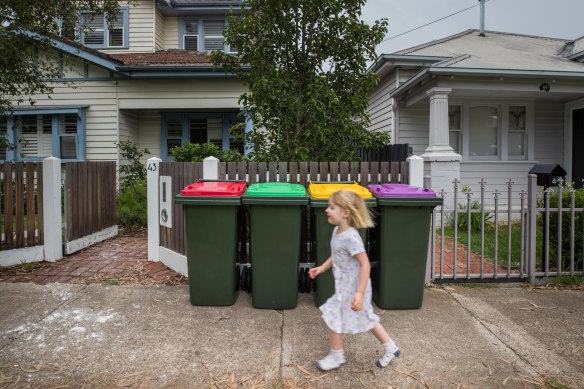Lifting rates won’t save cash-strapped councils. Their residents can’t afford it
From mowing weeds to rubbish dumping fees, supervising pedestrian crossings to aged care and libraries, the demands on councils have so far outstripped their revenue that even abolishing the state’s cap on rates wouldn’t solve the problem.
The state’s peak body for councils, which has long agitated against the state government cap on rates, warns that ratepayers could not afford to fill the gap even if municipalities were allowed to tap them for more money.

Local governments are concerned at the expansion in their responsibilities.Credit: Jason South
In a submission to the parliamentary inquiry, the Municipal Association of Victoria detailed a raft of widened service expectations and rising costs that it said were beyond the ability of councils to control or to fund within their budgets.
“There are serious risks to the financial sustainability of Victorian councils. Increasingly, councils report underlying deficits, reductions in unrestricted cash and working capital and deteriorating asset renewal rates,” it says.
“While the disconnect between the rate cap and actual cost increases is important to address, it is not a panacea. Most of the most financially marginal councils are home to communities that could not absorb higher rate increases and their councils know this. In many councils, capacity to pay is reaching its limits.”
In an argument mirrored across many other submissions from individual councils, the MAV blamed the state government for removing revenue opportunities from councils at the same time and pushing more requirements for spending onto them.
‘We will be unable to undertake new investment in infrastructure or capital projects.’
Stonnington Council
It calls for better resourcing through less restrictive grants and a refashioned rate cap that reflected the cost pressures on councils.
It pointed to Greater Dandenong as an example, which was wrestling a 20 per cent increase in building construction, playground materials, tree maintenance and other services.
Among a range of more specific requests is that the government actually spend some of the money brought from developments in the areas where that cash is raised, and that the state government adequately maintain state roads.
City of Yarra’s submission said it spent almost 10 times more on roads than the Victorian government gave it for that purpose.
Stonnington Council’s submission argues that it has only enough money to manage basic required asset renewals and updates on its $3.28 billion portfolio of land, buildings and infrastructure.
“We will be unable to undertake new investment in infrastructure or capital projects,” it said, noting it already had a $95 million backlog of immediate works needed to return its assets to an acceptable condition.
Frankston Council, which is eyeing eight straight years of operating deficits, said it could not keep producing those kinds of numbers without letting infrastructure deteriorate.
The MAV submission notes that councils maintain billions of dollars in public infrastructure but lack the funding base to maintain them – including 71 per cent of the state’s soccer grounds, 58 per cent of its AFL grounds and 58 per cent of its swimming pools.
Mornington Peninsula Shire council said cost-shifting from state and federal governments will cost it $234 million over the next five years across a raft of services, including kindergartens, powerline clearance and foreshore management.
Library funding was a frequent complaint in the council submissions, with Merri-bek among those pointing out the state used to fund libraries on a 50:50 basis with the council.
Like many municipalities, Merri-bek estimated it now funded 80 per cent of the cost of its libraries, pouring in $1.7 million per year above what it would be if the state shared the burden.
Several councils also pointed to new rules around pruning of trees around powerlines that were introduced by the state government without any additional funding.
They also noted that it was difficult to meet the government’s criteria to allow for rate rises above the mandated cap.
A Victorian government spokesperson said they were reducing the cost of living for ratepayers, while total financial support to local government had increased by $161 million to $875 million.
The Victorian Auditor-General’s most recent annual report on local government finances shows the sector had an operating surplus of $2.39 billion in 2022-23.
The Auditor General noted that expenses had again outpaced revenue and spending on capital works was well below target.
It found the major source of increased funding had come from the federal government and that borrowings had jumped 17 per cent in just one year as councils tried to stay on top of their infrastructure maintenance.
The number of councils in deficit had grown from 23 to 37 since 2019 while the number in surplus had fallen from 56 to 41.
Start the day with a summary of the day’s most important and interesting stories, analysis and insights. Sign up for our Morning Edition newsletter.